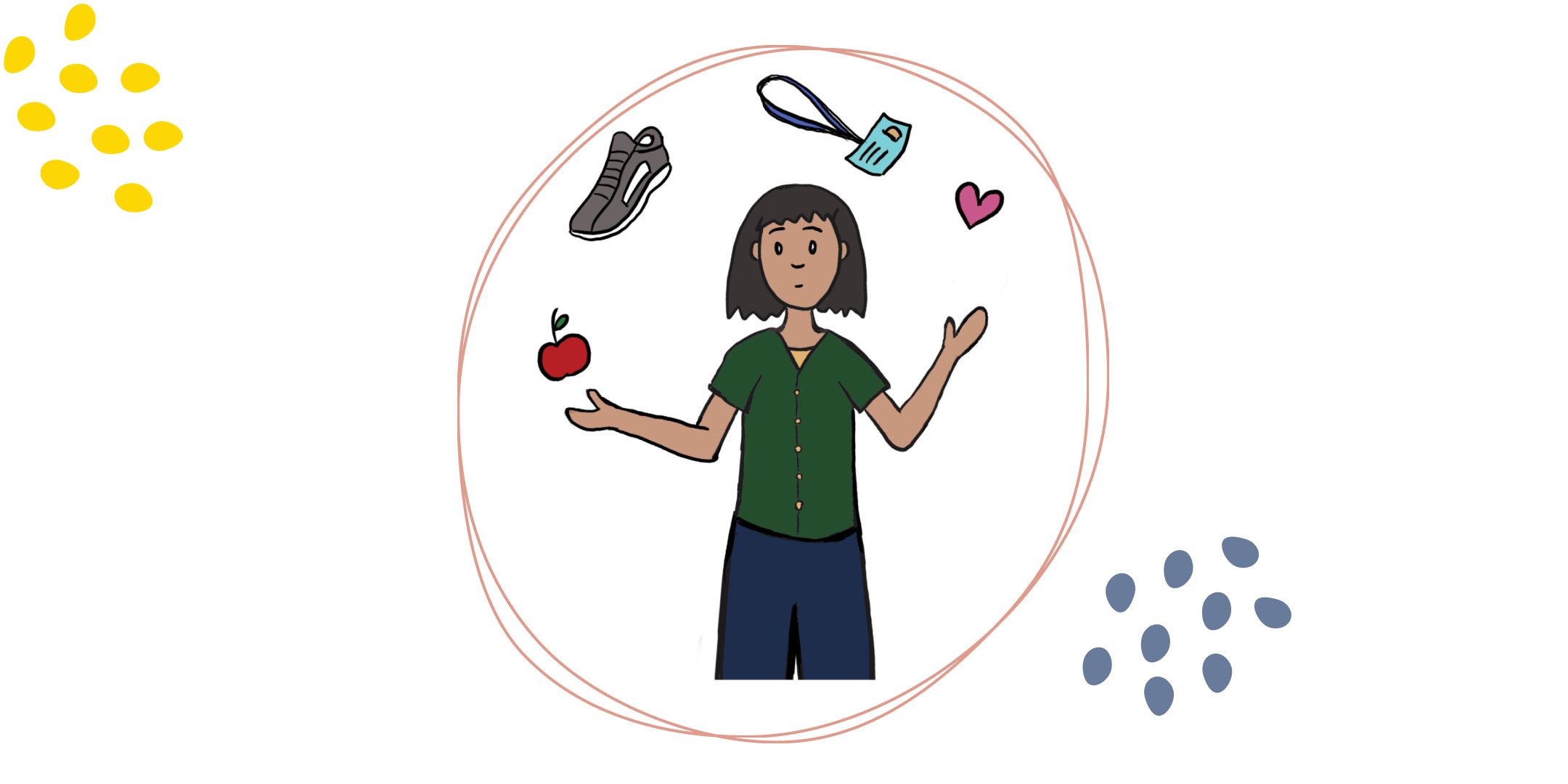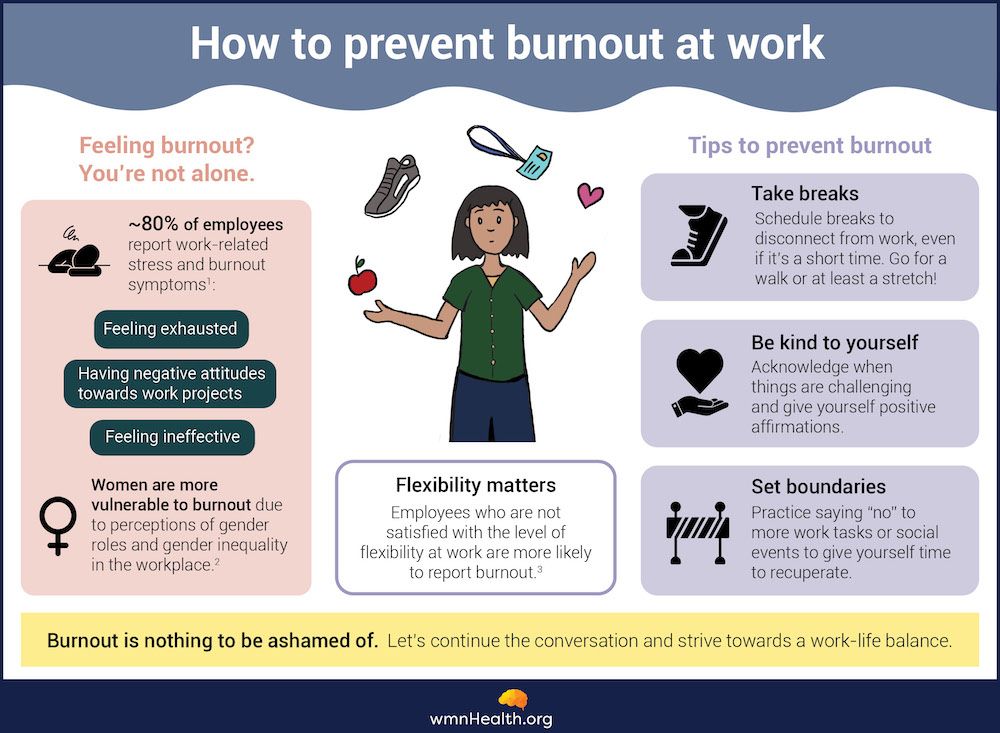
This article covers:
- What is burnout?
- How does burnout affect women?
- Does a flexible workplace help reduce burnout?
- How can you prevent burnout?
Women are excelling at work, breaking barriers, and achieving remarkable success. However, as they continue to juggle demanding careers, family responsibilities, and personal aspirations, the risk of burnout becomes a pressing concern. That's especially true in the post-COVID world. With the rise of hybrid and remote work arrangements, the issue of burnout has taken on a new dimension. How can women recognize burnout? How can they prevent it? And what special considerations should they make in the face of hybrid and remote work?
What is burnout?
Burnout is a state of physical, emotional, and mental exhaustion caused by prolonged and excessive stress, often stemming from work-related demands but can also occur in other areas of life. The World Health Organization defines it as a syndrome "resulting from chronic workplace stress that has not been successfully managed."
The hallmarks of burnout are:
- A feeling of overwhelming fatigue.
- A sense of detachment or cynicism about one's work or responsibilities.
- A reduced sense of accomplishment or effectiveness.
Burnout can also show up in your body as headaches, insomnia, stomach problems, and compromised immune function.
Burnout typically occurs when individuals face chronic stressors, such as high workloads, unrealistic expectations, long hours, or a lack of control over their work. It can affect anyone, regardless of occupation or profession, and manifest differently in each person.
 Infographic by Cat Lau. References below.
Infographic by Cat Lau. References below.How does burnout affect women?
Every year, Deloitte surveys women globally about their experiences in the workplace. Stress and burnout are common themes, though women reported some improvement in both in 2023. Still, 46% of women in 2022 and 28% of women in 2023 said they felt burned out.
Though burnout does not discriminate by gender, a complex interplay of societal, cultural, and workplace factors makes women more vulnerable to its effects. The Deloitte survey pinpointed a few:
Double burden of work: Many women continue to bear a significant portion of domestic responsibilities, including childcare and household chores. Furthermore, they often feel they need to support their partner's career. In fact, 37% of women told Deloitte they needed to prioritize their partner's career over their own, mainly because their partner earns more. Balancing their duties at home and work can increase stress and exhaustion.
Discrimination and microaggressions: Women may experience workplace discrimination or microaggressions, which can lead to stress and frustration. In the Deloitte survey, 44% of women reported experiencing microaggressions or harassment in the workplace in the past year. These experiences can erode self-esteem and contribute to burnout.
Lack of representation: Women may face isolation and lack of support in male-dominated work environments, which can exacerbate feelings of burnout. The absence of female role models or mentors can contribute to a sense of being undervalued or misunderstood.
Gendered expectations: Societal expectations often place additional pressure on women to be nurturing, empathetic, and accommodating. These expectations can make it challenging to assert boundaries and prioritize self-care.
Health and reproductive factors: Women's health concerns, such as menstrual cycles, pregnancy, and menopause, can introduce unique stressors. When Deloitte asked women about their health in the workplace, more than 40% of women who experienced health challenges related to menstruation said they worked through the pain and discomfort. Discrimination or inadequate support on these issues can contribute to burnout.
Organizations and individuals need to work together to address burnout effectively among women to provide support systems and create environments that prioritize well-being, work-life balance, inclusivity, and gender equity. Flexible working opportunities — including the flexibility to work from home and around work hours — are crucial to managing or preventing burnout among women.
Isn't flexible work a good thing for women in the workplace?
Generally, yes. However, flexible work arrangements come with challenges that can impact employees' well-being. For example, the lines between work and personal life can blur in a remote or hybrid work environment. Women may also face distractions at home, such as childcare responsibilities or household chores, which can interfere with their ability to focus on work tasks and increase stress.
Remote work can sometimes lead to an expectation of constant availability, as employees may feel pressured to respond to emails or attend virtual meetings outside of regular working hours. This can result in an increased workload and less time for relaxation and personal activities.
In some cases, remote workers may feel overlooked for career advancement opportunities or promotions compared to their in-office counterparts. This perceived lack of recognition can lead to feelings of frustration and burnout. In the Deloitte Women @ Work survey, 97% of respondents said that requesting or taking advantage of flexible working opportunities would negatively affect their likelihood of a promotion.
How to prevent burnout?
It is possible to mitigate the risk of burnout, including in hybrid and remote work environments. But to do so, organizations and employees must proactively address workplace challenges affecting women. This can involve setting clear boundaries between work and personal life, promoting regular breaks, encouraging social interactions through virtual meetings or team-building activities, providing access to mental health support, and ensuring remote workers have the necessary resources and opportunities for career growth.
Here's a list of strategies:
• Set boundaries: Establish clear boundaries between work and personal life, even in a hybrid or remote setting. Create designated workspaces and stick to a schedule to help separate your professional and personal responsibilities.
• Prioritize self-care: Invest time in self-care routines, such as exercise, yoga, meditation, and hobbies that bring you joy. These activities can help replenish your mental and emotional energy.
• Delegate and ask for help: Don't hesitate to delegate tasks at work or seek assistance with household responsibilities. You don't have to carry the weight of everything on your own.
• Effective time management: Use time management techniques like the Pomodoro method to maintain focus and prevent overworking. Take regular breaks to recharge.
• Seek support: Discuss any challenges you face openly with your supervisor or HR department. They may be able to offer solutions or accommodations that can help alleviate stress.
• Stay connected: In remote work situations, stay connected with your colleagues and supervisor. Regular communication can help you feel less isolated and more supported.
• Regularly assess your goals: Take time to review your career goals and priorities. Are they aligned with your values and aspirations? Adjust to avoid feeling trapped in a job that no longer fulfills you.
• Learn to say no: It's okay to decline additional responsibilities when already stretched thin. Saying no allows you to maintain a healthier work-life balance.
• Professional development: Invest in your professional development to boost your confidence and job satisfaction. Seek opportunities for skill development and growth.
• Celebrate achievements! Acknowledge and celebrate your achievements, no matter how small. This positive reinforcement can help combat burnout by reminding you of your successes.
Infographic References
1) APA 2022 Trends Report: Burnout and stress are everywhere (Accessed August 2023)
2) Beauregard, N., et al., Gendered Pathways to Burnout: Results from the SALVEO Study. Annals of Work Exposures and Health, 2018 May: 62(4): 426–437.
3) Future Forum Pulse: February 2023 (Accessed August 2023)


